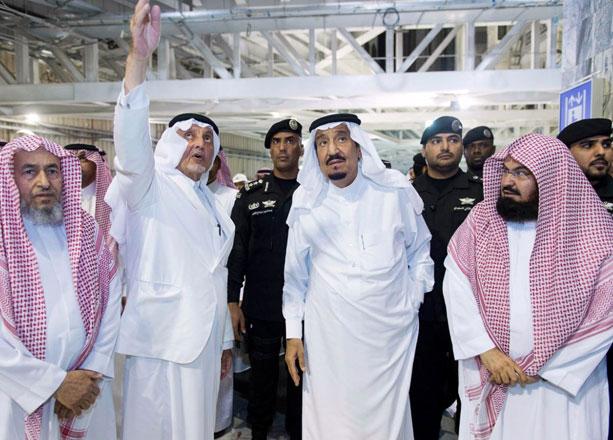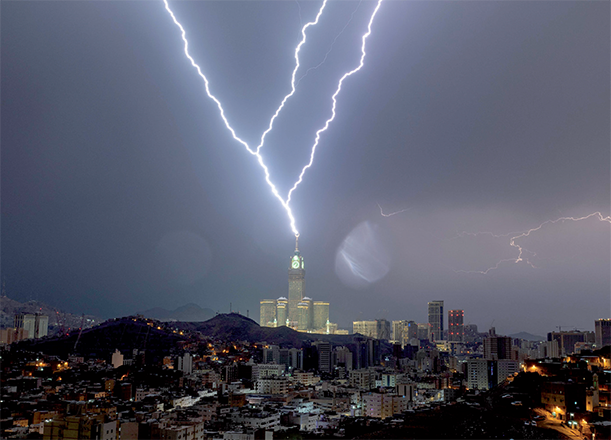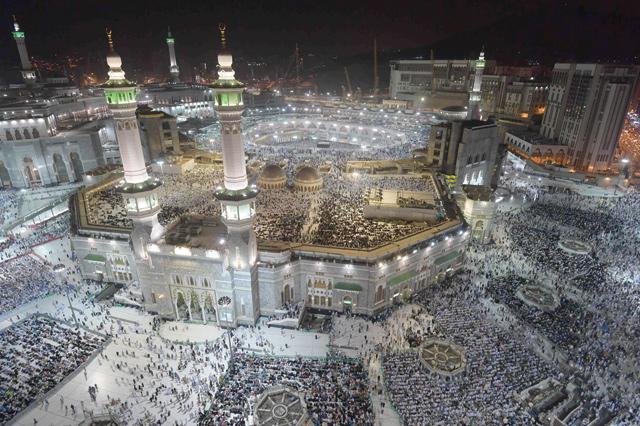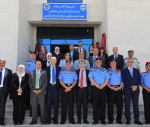You are here
Mecca crane collapse highlights city's development boom
By AFP - Sep 13,2015 - Last updated at Sep 13,2015
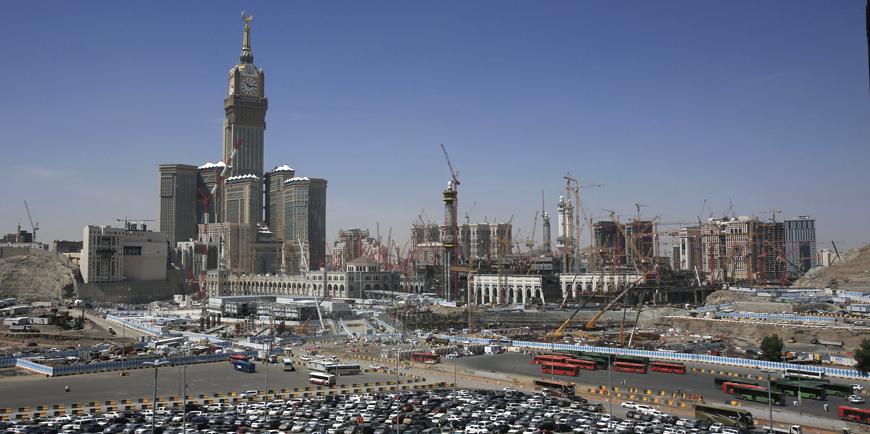
In this May 13, 2014 file photo, construction cranes and scaffolding dominate the minarets and entries to the Kaaba at Mecca, Saudi Arabia, where a major expansion project is revamping the holiest site in Islam (AP photo)
MECCA, Saudi Arabia — The deadly collapse of a construction crane in Saudi Arabia's holy city of Mecca has highlighted the controversial pace of high-end urban development in the birthplace of Islam.
More than 100 people died on Friday when the crane toppled into a courtyard of the Grand Mosque, one of Islam's holiest sites, during a thunderstorm.
The crane was one of several at the site in western Saudi Arabia where hundreds of thousands of Muslims from around the world have converged ahead of the annual hajj pilgrimage later this month.
A multi-billion-dollar effort was launched four years ago to expand the mosque to accommodate increasing numbers of pilgrims.
But as the expansion of the Grand Mosque is widely welcomed to cope with the influx, modern urbanisation around the mosque has garnered criticism.
Towering over the place of prayer, a different type of development has taken shape, gargantuan commercial projects which critics say have erased Mecca's heritage and threatened its spirituality.
Local authorities, however, defend the city's urban projects, which include rail and road improvements, as a modernisation effort that makes visitors more comfortable.
"Mecca is not any ordinary city," said Irfan Al Alawi, co-founder of the Mecca-based Islamic Heritage Research Foundation.
He is concerned that the city's many skyscrapers are "making it look like Manhattan".
Chief among them is the 76-storey Mecca Royal Clock Tower and the gargantuan Abraj Al Bait complex attached to it.
One of the world's largest buildings in terms of floor space, the six towers in the complex include luxury hotel rooms and a multi-storey shopping mall.
The Fairmont Makkah Clock Royal Tower hotel boasts 56 elevators and says "discerning guests have the privilege of choosing their rooms showcasing unrivaled views" that include the Kaaba inside the Grand Mosque.
All Muslims face the cube-shaped Kaaba to pray, and circumambulating the Kaaba is one of the rituals of the hajj.
At 601 metres, the clock tower is the world's third-tallest building.
'Dynamiting mountains'
At its summit is a golden crescent moon and the four-faced illuminating clock, several times larger than London's Big Ben.
It bears the words "In the Name of Allah", and its size helps visitors at other holy sites locate the mosque and Kaaba.
Pilgrims leaving the mosque are bombarded by advertisements from the facades of the nearby tall buildings.
"Here we are dynamiting mountains to make way for big huge skyscrapers such as the clock tower," said Alawi.
He is an outspoken critic of redevelopment at the Muslim holy sites, which he says is wiping away tangible links to the Prophet Mohammed.
"People visit the Grand Mosque to worship and to have spirituality linked to God. But it's become a holiday resort," he said, noting the availability of hotel swimming and gym facilities.
"It's losing its spirituality," he added. "You wouldn't find this sort of entertainment anywhere near the Vatican. So why is it happening in Mecca ?"
But Shaker Al Sharif Al Harthi of the Mecca Chamber of Commerce defended the clock tower as "a landmark not only in Mecca but the whole kingdom".
Faisal Al Salmi, a teacher, said the city's unprecedented construction growth has brought jobs and investment opportunities.
Fifty-year-old pictures of the Haram, or sacred site around the Kaaba, show a modest mosque surrounded by old neighbourhoods.
Many of these were razed in initial expansion projects for the Grand Mosque.
Four years ago, the late King Abdullah inaugurated the latest project, a 400,000-square-metre enlargement of the Grand Mosque.
That is the equivalent of more than 50 football pitches, and it will allow the complex to accommodate roughly two million people at once.
"What is happening here is a major development boom through enhancing public-private partnership," said Fahad Al Harbi, a district chief in Mecca.
He added that the city's transportation projects as well as improvements at the Grand Mosque and other sites, "are implemented to ease the experience of the visitors".
Mahmoud Damanhory, a board member for Southeast Asia Pilgrims' Guides, a group which assists pilgrims from that part of the world, said authorities are transforming Mecca into a "First World" city.
For Abdullah Hasan, a Sudanese pilgrim returning after 10 years to perform hajj again, the city's progress in hotels, transport and other areas is a welcome change.
He said foreign guests are praying in thanks to the kingdom's leaders "for the comfort they have provided to pilgrims and visitors".
Related Articles
Mecca — Saudi Arabia's King Salman vowed on Saturday to find out what caused a crane collapse that killed 107 people at Mecca's Grand Mosque
RIYADH — Fierce storms closed schools Wednesday in Saudi Arabia’s Mecca region, home to Islam’s holiest site, the Grand Mosque, which was la
MECCA, Saudi Arabia — In the Saudi city of Mecca, dotted with fast food eateries and stalls selling Chinese-made trinkets, vendors are ready


